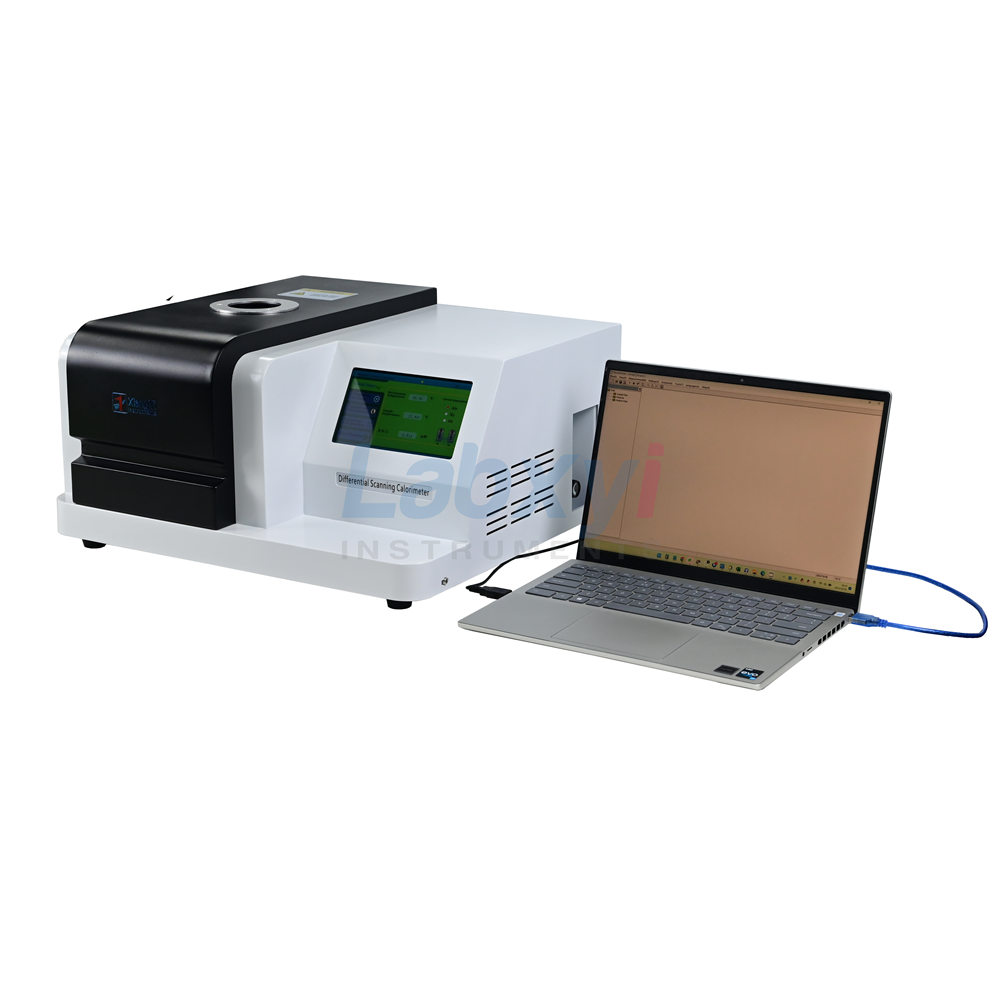Differential scanning calorimeter is widely used in the study of food properties. By measuring parameters such as peak position, peak value, peak area, etc., it can analyze the phase transition temperature, thermal enthalpy, crystallization temperature, melting point, etc. of food components. The test case shared this time is to use differential scanning calorimeter to test starch. We can use DSC differential scanning calorimeter to study and observe this endothermic phenomenon, so as to understand the influence of gelatinization temperature on food quality and processing characteristics.
1. The meaning of starch gelatinization
The gelatinization of starch refers to the process when granular starch is added to a certain proportion of water and heated. The starch granules will absorb water and swell, and the starch molecules will begin to vibrate violently. The hydrogen bonds between the starch molecules in the crystalline phase and the amorphous phase will be broken. At this time, a large amount of water will be absorbed at the original hydrogen bond position, so the crystalline area of the starch gradually disappears. When the crystalline area disappears completely, it is called gelatinization, and the temperature at this time is the gelatinization temperature.
2. Application principle of DSC in starch gelatinization
DSC is used to detect the sample to be tested as the temperature rises, and to collect real-time endothermic or exothermic reactions of the sample when heated; when starch is mixed with water, the water will form a chain water crystal structure with the starch molecular chain. When this structure shows an obvious endothermic melting peak as the temperature rises, the melting temperature and the amount of endothermic heat will be different for different concentrations. DSC can calculate the area of the peak formed to determine the amount of endothermic heat, and then understand the degree of gelatinization.
3. DSC method for measuring starch gelatinization
(1) Experimental equipment: DSC3000 differential scanning calorimeter
(2) Sample preparation: 3 mg of wheat starch was placed in an aluminum crucible, and then 5 ul of water was added to mix with the mixture, and the mixture was sealed with a tablet press.
(3) Instrument use: The melting point and enthalpy were calibrated with standard indium metal before testing. The crucible with the sample was placed on the right side of the tray, and a blank aluminum crucible with a lid was placed on the left side. The temperature was set to 200°C, with a heating rate of 10°C/min, and 50 ml/min of nitrogen was introduced for the experiment.
(4) Experimental graph:

(5) Result analysis: When starch and water are just mixed, there is no endothermic or exothermic reaction between the two. When the temperature reaches 88.0°C, the reaction begins and there is an endothermic phenomenon. The peak value is 103.0°C. The sample ends endothermic absorption at 107.1°C. The area of the entire endothermic peak is the energy absorbed by starch gelatinization.
4. Experimental Conclusion
DSC obtains the gelatinization temperature of starch through the sample and the blank control experiment on the left, and its peak area is the degree of starch gelatinization. After gelatinization tests on wheat starch, corn starch and potato starch, it was found that the gelatinization temperature of corn starch is the highest and requires the most energy.

In addition to its application in the food industry, differential scanning calorimeters are also used in plastics, rubber and plastics, coatings, medicine, metal materials and composite materials. Xiangyi Instruments Xiangtan Limited can match the corresponding instruments for different materials and testing requirements, and provide customers with suitable products and professional after-sales services.
